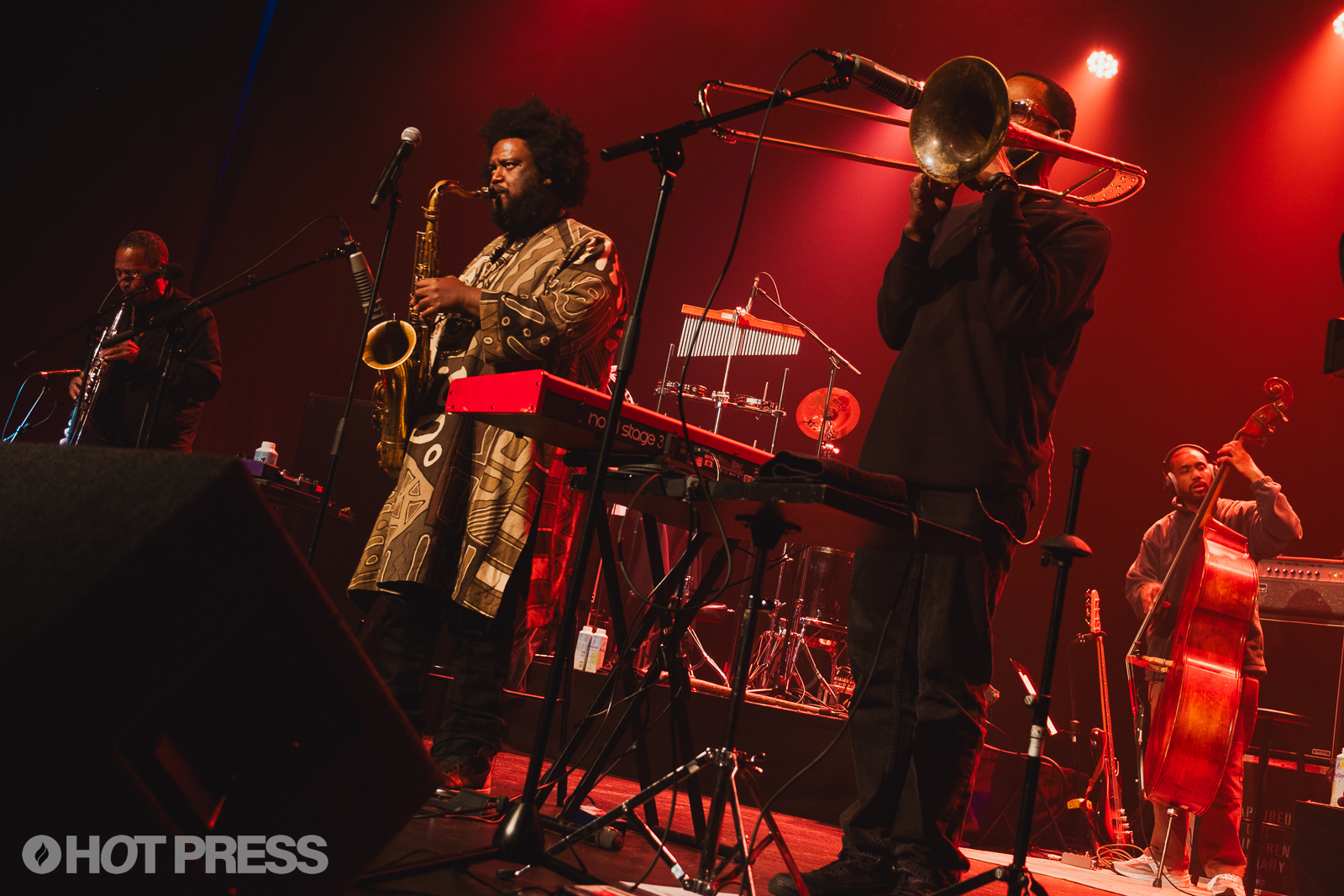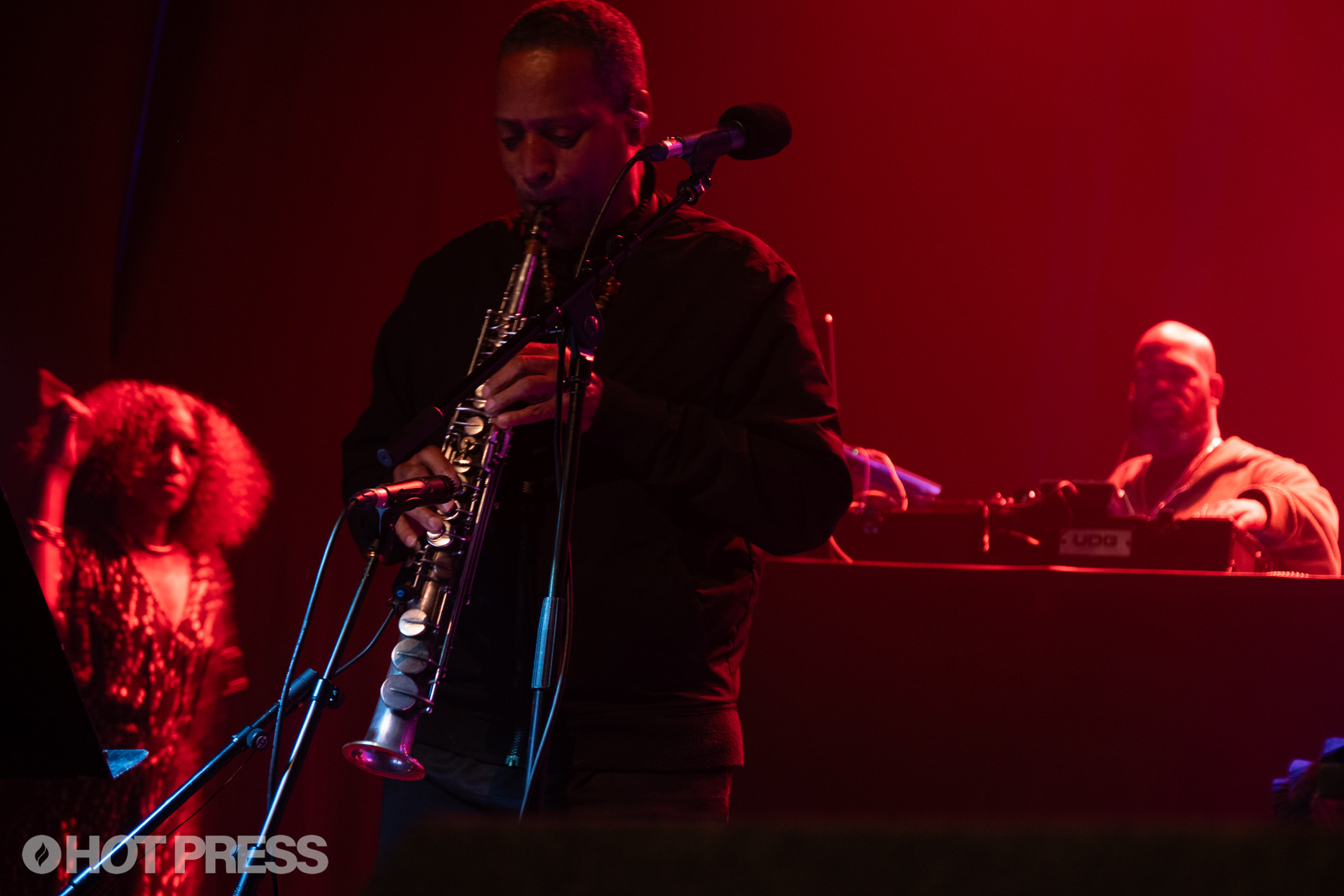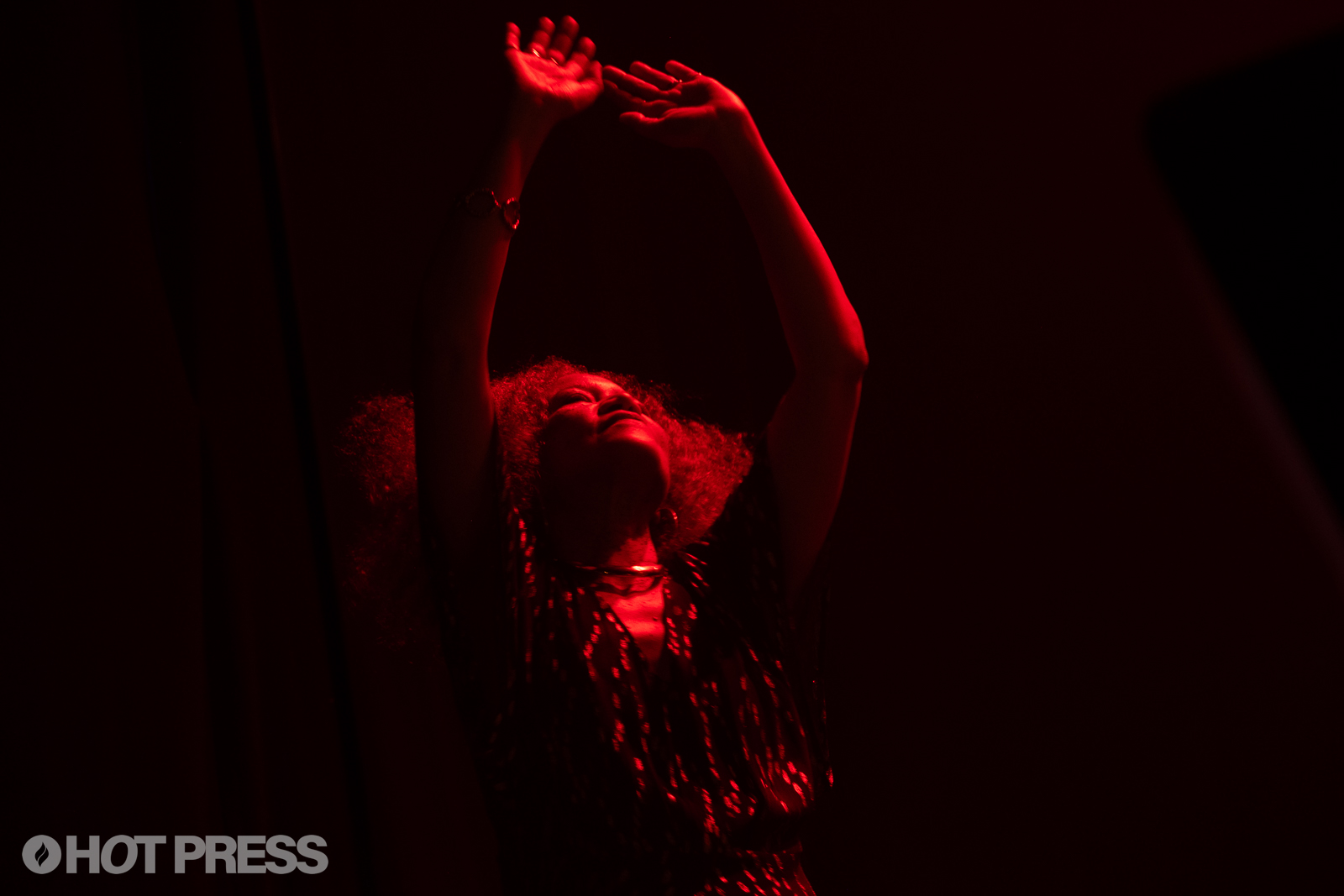- Music
- 09 Apr 25

Washington and his incredible band performed with as much prowess as passion.
Los Angeles-born saxophonist and multi-instrumentalist Kamasi Washington belongs to a generation of jazz musicians who, as he puts it himself, "are as fluent in J Dilla and Dr. Dre" as they are "in Mingus and Coltrane." The musician's heavily collaborative body of work credits this heritage, having teamed up with the likes of Kendrick Lamar, Snoop Dogg, as well as St. Vincent and Chaka Khan.
This genre-blurring background is probably the reason why his set last night at 3Olympia Theatre included such an eclectic array of sounds, including everything from experimental nu-jazz brass solos over polyrhythms to submachine gun-like chopped vocal samples and hip-hop beats.
Starting off with 'Lesanu', the opener to Washington's last album, 2024's Fearless Movement, the performance offered complex soundscapes and extended, dexterous pieces of improvisation.
Washington walked into stage alongside his band members: his father Rickey Washington on flute and soprano saxophone, trombonist Ryan Porter, keyboardist Brandon Coleman, drummer Tony Austin, bassist Joshua Crumbly (on both bass guitar and double bass), vocalist Patrice Quinn, and, of course, DJ Battlecat, a pioneer of the West Coast sound, on mixing table and percussion.
Advertisement
 Kamasi Washington at 3Olympia on 08/04/2025. Photo Credit: Curtis DeSmith.
Kamasi Washington at 3Olympia on 08/04/2025. Photo Credit: Curtis DeSmith.All the musicians alternated in classic jazz-improv style. Washington grabbed the mic to introduce them, the audience held their breaths during their virtuoso solos, and then clamoured right after they finished.
Every performer's prowess at their instrument was easy to appreciate. However, it was sometimes more interesting to hear the solos – and watch both the soloist and the non-playing musicians feel every note in their bodies – than to hear the whole band play, which could get repetitive, especially taking into account the restlessness of the drums, which, although impressive, barely stopped playing throughout the whole set and sometimes felt a bit absorbing.
For instance, Miles Mosley's expressive, only solo on bass guitar was remarkable, accompanied by a nimble backbeat from the drums and some dreamy smooth-jazz synth glissandos.
 Kamasi Washington at 3Olympia on 08/04/2025. Photo Credit: Curtis DeSmith.
Kamasi Washington at 3Olympia on 08/04/2025. Photo Credit: Curtis DeSmith.Another highlight was keyboardist Coleman's solos. Surrounded by several synthesisers, he created intricate soundscapes on his own, going from string presets to rockabilly high-pitched piano riffs to funky voice-effect leads.
Advertisement
It was interesting to appreciate a hint of Washington's subversive hip-hop background in his preamble to the melodic 'Lines in the Sand'. "This song is meant to remind us that no matter what they say, we ain't separate – we're together," he said.
"Those minds that try to use, divide us, and put us into boxes... They're not real. They're just trying to divide us so they can step right over."
Vocalist Quinn, who sang prominently throughout 'Lines in the Sand' and during a few occasions during the set, gave a captivating performance. It was not showy – she did not do any complex vocal runs, nor any heavy belting –, but her velvety, full-bodied tone and her quick, ever-present vibrato made the few moments she took centre stage special.
 Kamasi Washington at 3Olympia on 08/04/2025. Photo Credit: Curtis DeSmith.
Kamasi Washington at 3Olympia on 08/04/2025. Photo Credit: Curtis DeSmith.Another interesting preamble was the story behind 'Asha the First'. Washington explained how the song came to be after he heard his four-year-old daughter playing a melody on the piano. He described it as a "beautiful moment where she realised she had control over the keys."
It should be mentioned that opener Emma-Jean Thackray did a great job. Her soulful singing over lo-fi beats infused with spoken vocal samples, as well as her guitar picking and trumpet playing, warmed up the audience and demonstrated that she shared the headliner's deep passion for jazz.
Advertisement
The night's peak came at the end, during a rendition of 'Prologue'. Washington's heartfelt solos, which often cracked into altissimo, crescendoed towards the end of the song as different instruments jumped in, ultimately climaxing into the staccato, imperial march-like chorus of 'Fists of Fury'.
After disappearing for a brief moment, the band returned for an encore. By that time, most of the standing audience members were dancing freely to the breezy jazz coming from stage. Once the show had ended, the night proved itself an undeniable testimony to how alive and ever-changing jazz is.










